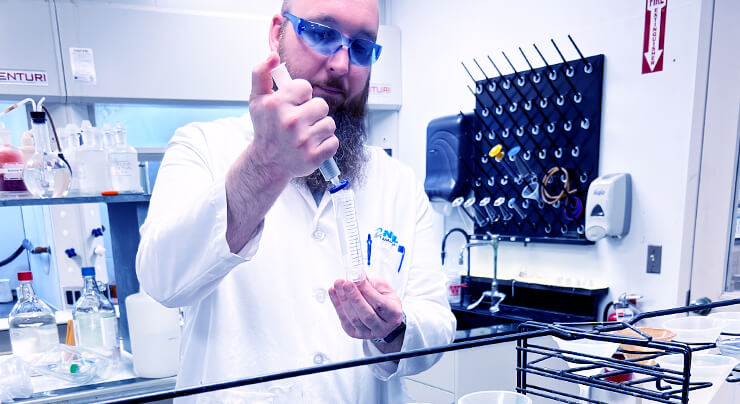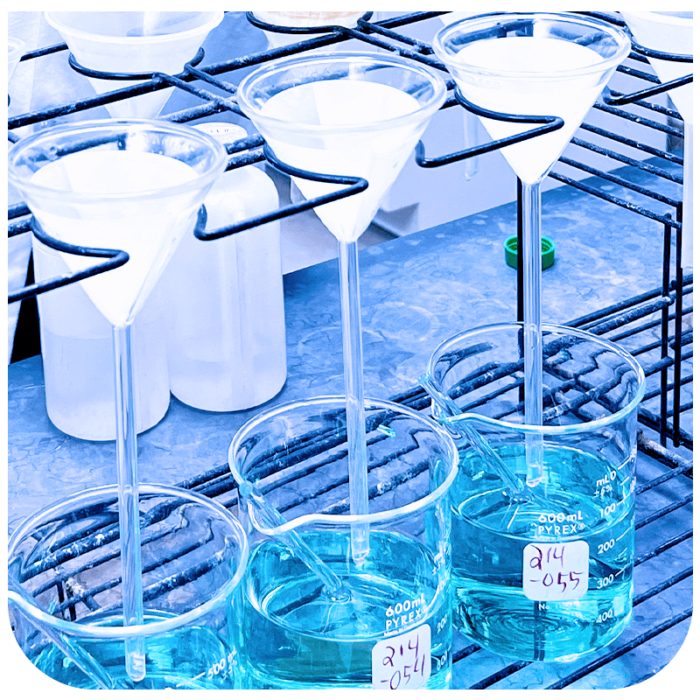Critical Chemistry Techniques
To properly test samples through instruments, scientists place a solid sample into a container and add a liquid that can break down the solid. Common solvents include water, acids, or other specific chemicals depending on what they’re trying to test.
The proper combination of acid and digestion techniques are used to dissolve even the toughest of materials for ICP analysis. At NSL, we use hotplates, block digesters, Bunsen burners, closed vessel microwave digestions, muffle furnaces and alkali flux fusions for digestions.
Some of the common wet chemistry techniques we use include:
- Gravimetric – for quantification of silicon, aluminum, nickel, rhenium, gold and silver
- Titrimetric – for boron and chromium
- Colorimetric – for phosphorous and Cr +6
- “Referee” to validate accuracy of results from traditional instrumentation testing




